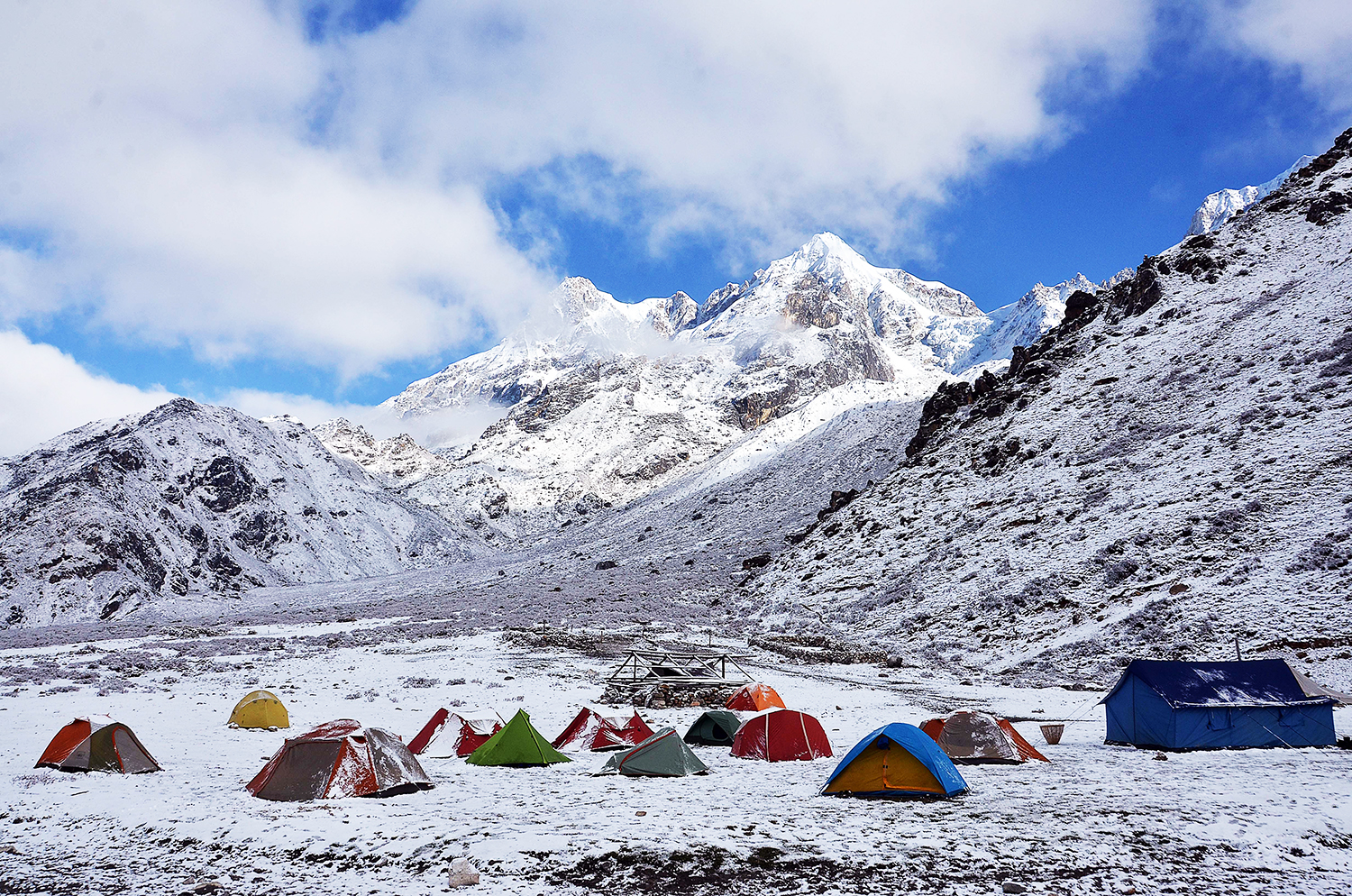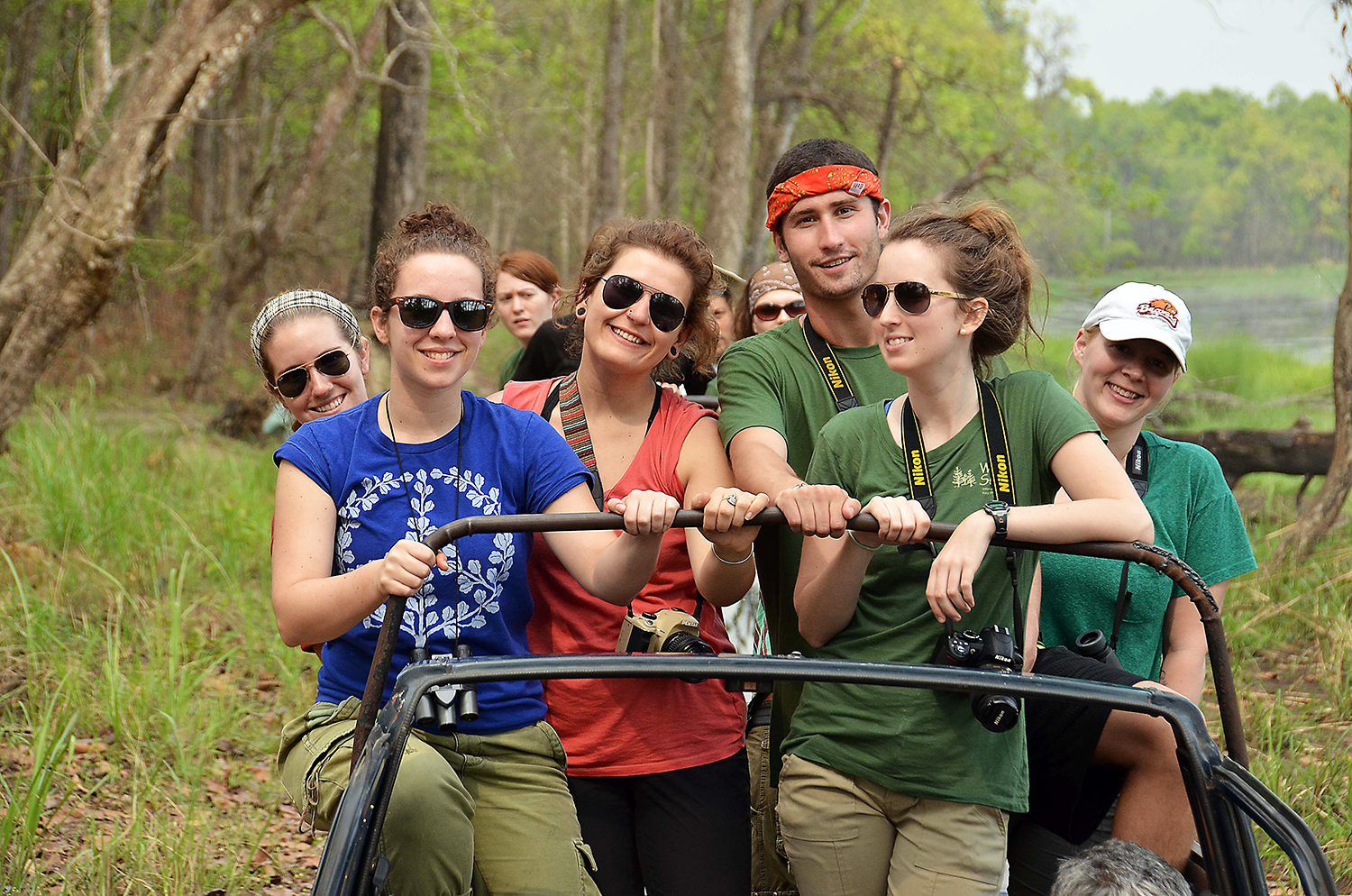Program Details
Location: Kathmandu, Nepal
Dates: Spring 2026: April 9—May 22, 2026
Fall 2026: September 30 - November 12, 2026
Spring 2027: April 7—May 20, 2027
Applications: Accepted on a rolling admission basis
Accommodations: Primarily camping or rural lodge
Credits: 15 quarter credits or 10 semester credits
Language: English instruction
Courses: Environmental Wildlands Studies, Environmental Field Survey, Wildlands Environment and Culture
Prerequisites: One college level course in environmental studies, environmental science, ecology or similar. 18 years of age
Program Costs
Nepal Spring 2026
$ 150 Application Fee
$ 7,500 Program Fee
$ 4,850 In-Country Logistics Fee
$ 2,300 Estimated Airfare and Mandatory Travel Insurance
$ 700 Estimated Food and Personal Expenses
$15,500 Total Estimated Cost
Spring 2026: Program fees due by February 1, 2026
Nepal Fall 2026 and Spring 2027
$ 150 Application Fee
$ 7,750 Program Fee
$ 4,900 In-Country Logistics Fee
$ 2,300 Estimated Airfare and Mandatory Travel Insurance
$ 700 Estimated Food and Personal Expenses
$15,800 Total Estimated Cost
Fall 2026: Program fees due by August 1, 2026
Spring 2027: Program fees due by February 1, 2027
The Program
After an orientation in Kathmandu, Nepal’s capital, we will begin our field studies in the near-tropical, forested floodplains of Chitwan National Park. These lush forests support populations of rare mammals like rhinoceros, sloth bears, Bengal tigers, langur monkeys, hundreds of species of birds, and two crocodile species. Here it is possible to see large wild mammals that have disappeared across much of their range, and study the challenges of wildlife management in one of the lesser developed regions of Asia.
We then travel into the Himalayan foothills and proceed on foot to the valleys of the High Himalaya. Our field site is the mountain region of far eastern Nepal, which includes Kangchenjunga Conservation Area and Makalu Barun National Park. The cultural landscape remains quite traditional here and the habitat diversity is exceptional, with deep valleys separated by some of the highest peaks in the world. Kangchenjunga exceeds 28,000 feet elevation and overlooks a wild landscape of active glaciers and steep river valleys. High elevations are alpine, but the river valleys are lush and subtropical. Our program will visit a wide range of climatic zones on the flanks of the eastern Himalaya. In eastern Nepal, we may have the chance to interact with local conservation groups, affording team members an opportunity to directly observe the field methods of those people best positioned to influence Himalayan conservation strategies. We will also conduct our own field studies and observations to gain skills and knowledge about the habitat, key behaviors and conservation needs of the wildlife and wildlands of this area.
By the end of the program, each of us will have acquired field experience in rich, important wildlife habitat; developed an understanding of the ecology, behavior, and habitat needs of key wildlife species; learned a great deal about the geography of a spectacular mountain region; and gained practical experience with conservation management in Nepal’s dynamic, rapidly changing society.
Academic Syllabus
Student Program Manual
Stories From the Field
Kassidy Haluska
Nepal 2019 alumni
“My Wildlands Nepal trip was the most enriching experience I’ve ever had. I was amazed at how much of the country and culture I got to see. By the time I was leaving it felt like home, yet still somehow it was exciting and new the whole time. The immersive nature of the program made it so that work, play, and exploration were all blended together. I didn’t realize going into it how incredible it would be to see all of the plants, animals, mountains, and rivers that we learned about in our lessons in real life. Everything clicked together in a cohesive way because we were living among the ecosystems the whole time we were learning about them. Whenever we were on the trail and had a question about something we saw, we would just ask an instructor and they could tell us all about what we were seeing. Everything connected. We traveled with Nepali people, ate their food, learned about their traditions. We hiked more than I have hiked in my lifetime. We saw the most incredible mountain views I have ever seen. And at the end we felt like a family.”
Watch Kassidy’s Video
Charles Chris Carpenter
Lead instructorPhD in Biological Ecology, UC Davis, 1991
Chris is a conservation scientist who has conducted field studies and led natural history expeditions in Asia for over twenty years. His main academic focus is the ecology and geodynamics of mountain environments. He is also interested in the marine world, environmental control of species richness and strategies for habitat conservation. He lives in Chiang Mai, Thailand, and teaches part of the year at Payap University. Chris has been teaching with Wildlands Studies since 1990 and has taught in China, India and Southeast Asia. He currently leads our Nepal program.





















